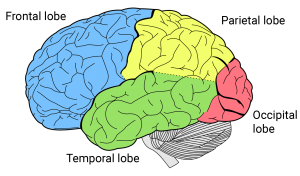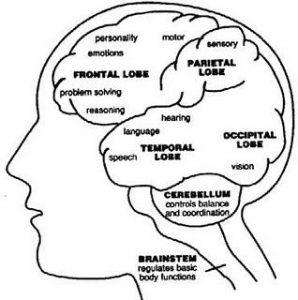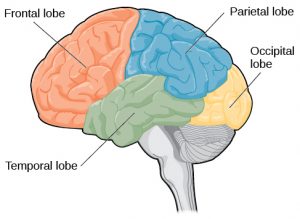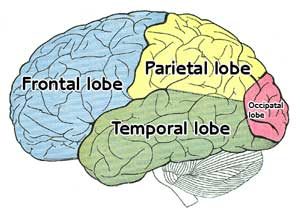What is Parietal Lobe?
The human cerebrum is anatomically divided into a number of lobes, which are regions marked by specific points and are known to be associated with certain functions and processes that they either influence or completely control.The parietal lobe is a lobular area located in the cerebral cerebrum (also known as the cerebral cortex) of the forebrain.
Where is parietal lobe located?
The parietal lobe is located near the anterior, central end of the cerebrum, seen behind the foremost lobe called the frontal lobe and situated on top of the temporal and occipital lobes. There lies a sulcus, a depression or fissure separating it from the frontal lobe known as parieto-occipital sulcus, while the lateral sulcus called Sylvian Fissure separates it from the temporal lobe.
What are the important structures of parietal lobe?
Being divided into the left and right hemisphere, the cerebrum incorporates the parietal lobe at both the sides. It has some distinct structures playing key roles in brain functioning. These include the following:
- Postcentral Gyrus – this area is the primary somatosensory cortex, which gains sensory information and loads it on a sensory homunculus. This area is also referred to as Brodmann Area 3.
- Posterior Parietal Cortex – It coordinates movements and spatial reasoning, plays a vital role in attention to the new stimulus.
- Superior Parietal Lobule – helps in the determination of one’s own spacial orientation as well as of other objects such as addresses and roads. It gains significant input by hand, that is, it aids the coordination of fine motor skills.
- Inferior Parietal Lobule – Also known as the Geschwind’s Territory, this region is responsible for assessing facial expressions to judge emotions. It also helps in processing language, mathematical operations, and body language.
- Primary Sensory Area – this is where the impulse from the skin is gained and interpreted, such as warmth, cold, touch, and pain.
Function – What does the parietal lobe do?
Known for its sensory perception and integration, managing taste, hearing, smell, touch and sight, the Parietal lobe accounts for the chief sensory area of the brain. The more sensory information the body gains, the more amount of gyri and sulci are present in the lobe. Some functions that the parietal lobe carries out are listed below.
- Has the ability to distinguish between two different points without the visual stimulus.
- Localized Touch – upon being touched the sensation is recognized at the point of touch. The impulse does not strike in the brain or is not felt all over the body.
- Integrates all sensory type of information from all over the body.
- Provides visuospatial navigation along with spatial reasoning, which includes reading and understanding maps, preventing self from stumbling upon an object. For example hand-to-mouth coordination for eating food without the visual stimulus.
- The parietal lobe and the occipital lobe conjointly perform certain visual functions.
- Helps in an assessment of shape, size, and distance of an object.
- Helps in understanding quantity, in terms of numerical relations.
- Aids in memorizing visual words.
- Processes language.
- Aids in attention-based coordination.
How is the parietal lobe associated with other regions of the brain?
Researchers have found out the relevant evidence to prove that there are many such areas in the brain, which work conjointly and in coordination with other related regions. The parietal lobe relies on an array of sensory inputs from different parts of the body. It also sends and receives signals relayed from other regions of the brain. The occipital and parietal lobe work together for visual perception, spatial orientation, navigation, and logic. Damage to one region may effect relay of signals to other, coordinating regions.
Parietal Lobe Pictures
What are the effects of parietal lobe damage?
The parietal lobe is burdened with a huge number of functions it is responsible for. Hence, it’s damage can lead to irreversible consequences. The prognosis depends on the site of damage, how severe the injury is and if treatment is possible or not. The care may include occupational, speech or physical therapy. Proper diagnosis and treatment allow other regions of the brain to compensate. Focus on a healthy lifestyle and continuous exercise may aid in better chances of recovery. Listed below are 3 specific syndromes commonly found in patients fighting parietal lobe damage.
- Gerstmann’s Syndrome is an array of symptoms that arise as a result of a damaged parietal lobe lying in the left hemisphere. The patient is seen struggling with writing, language, arithmetics, perception logics.
- Balint’s Syndrome is incurred when damage occurs on both sides of the parietal lobes. It impairs motor skills along with visual attention. Voluntary eye movements may become weak in the patient. They might not be able to integrate all the attributes of a visual picture and may also be unable to manipulate an object in absence of a visual stimulus.
- If the right parietal lobe is damaged, the ability to care for one’s own body is impaired as the patient is unable to notice for at least one side of the body. The ability to draw is also diminished.





No comments yet.